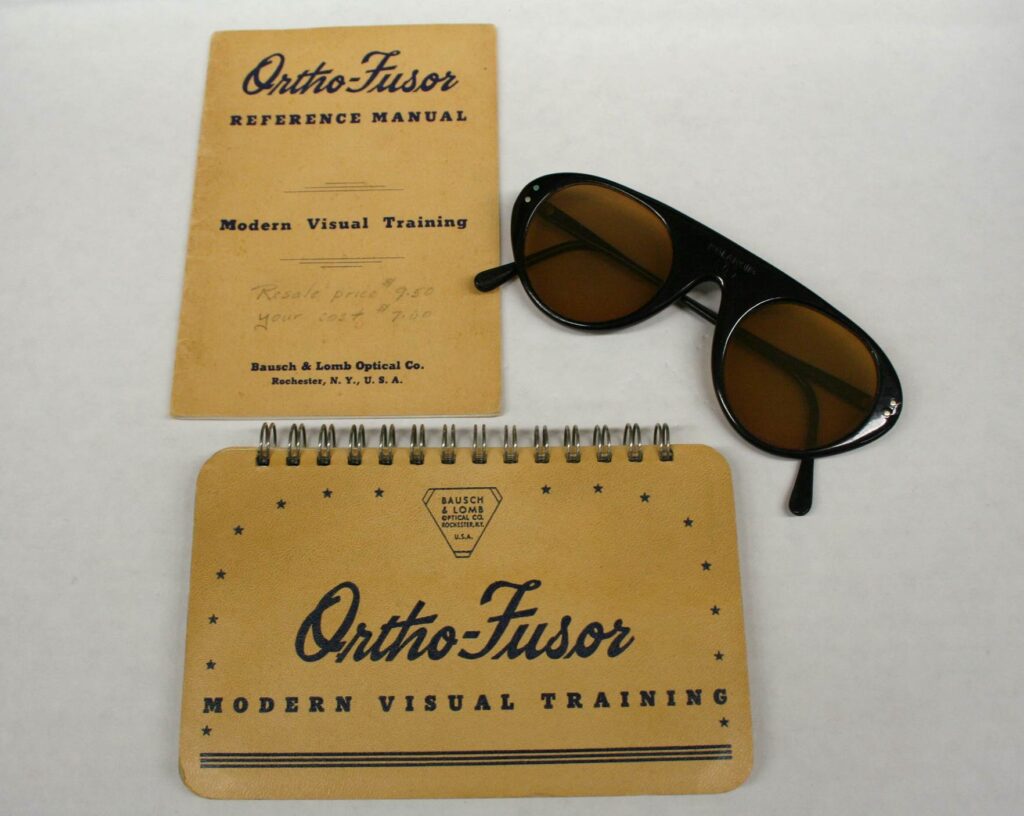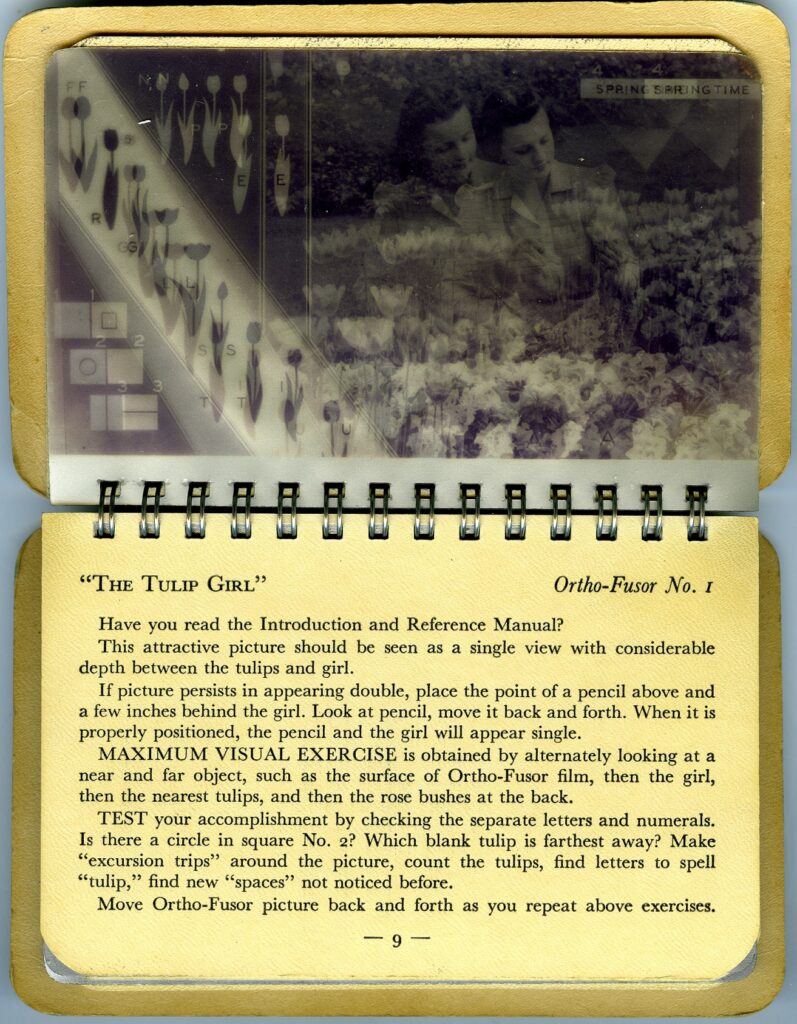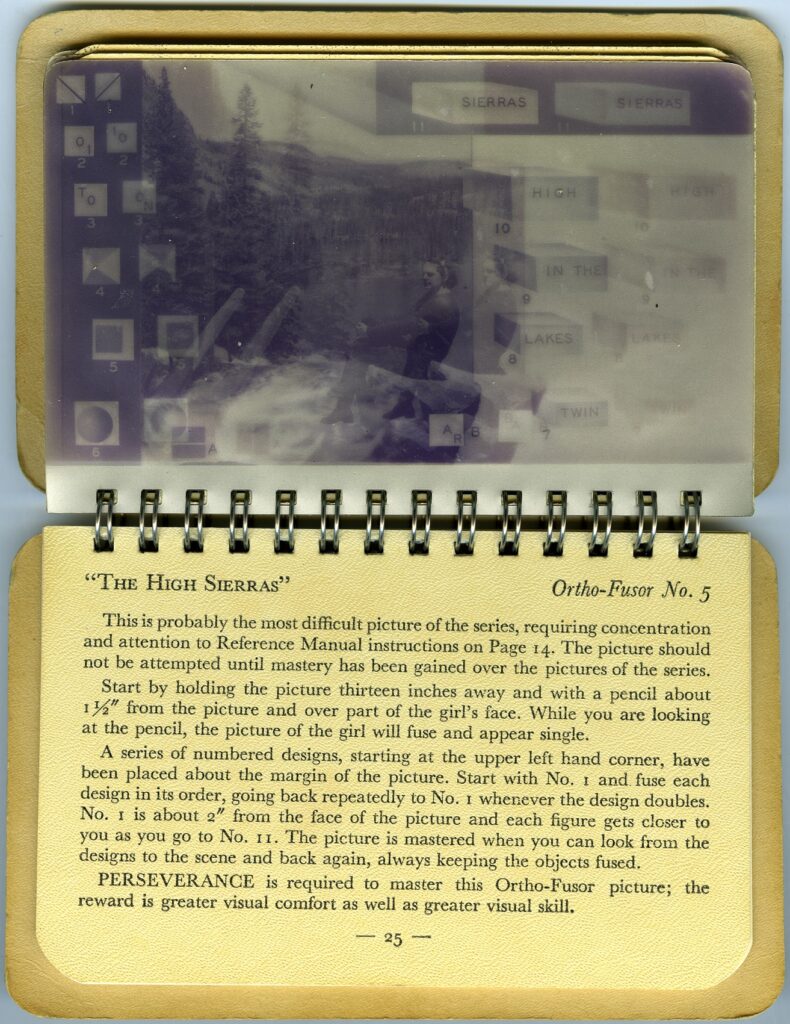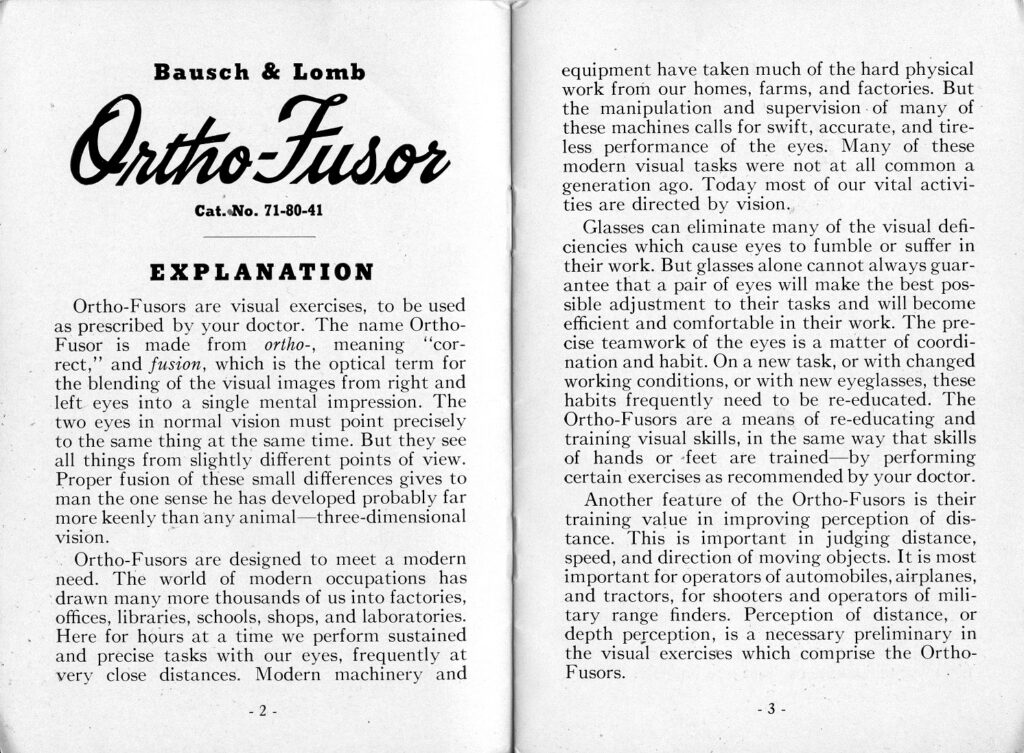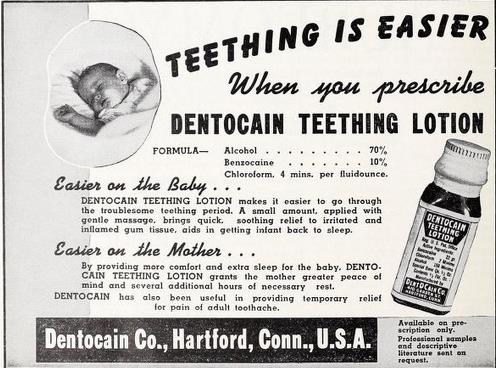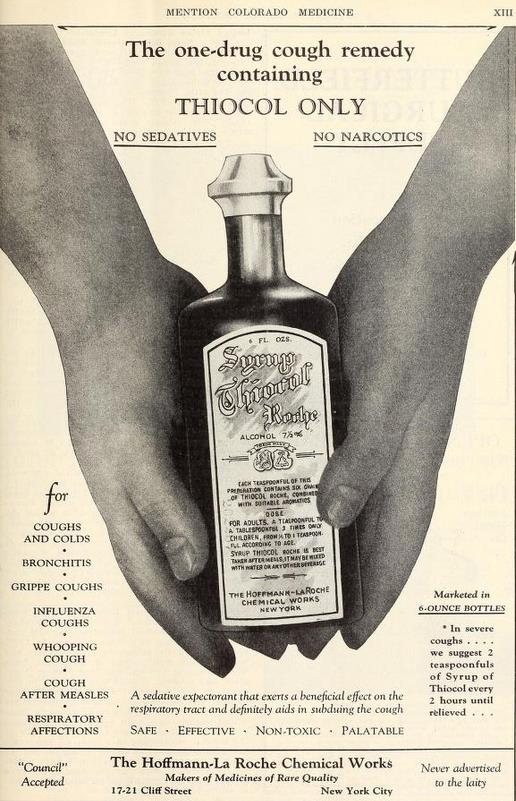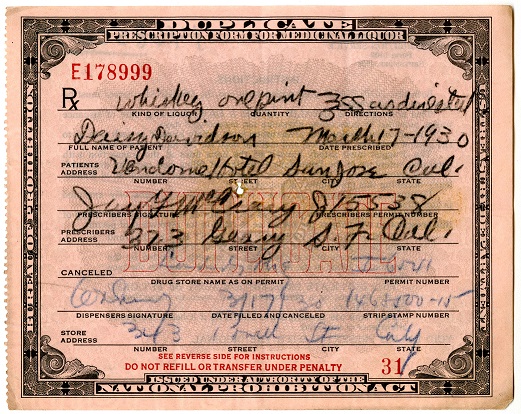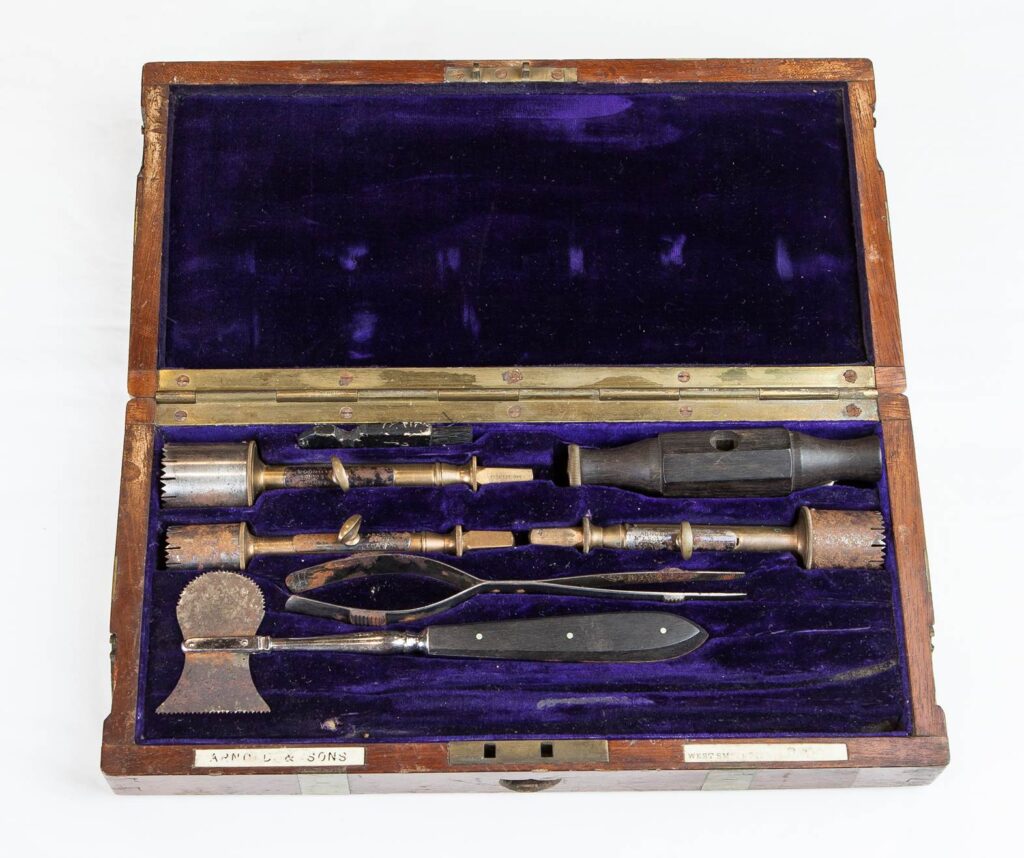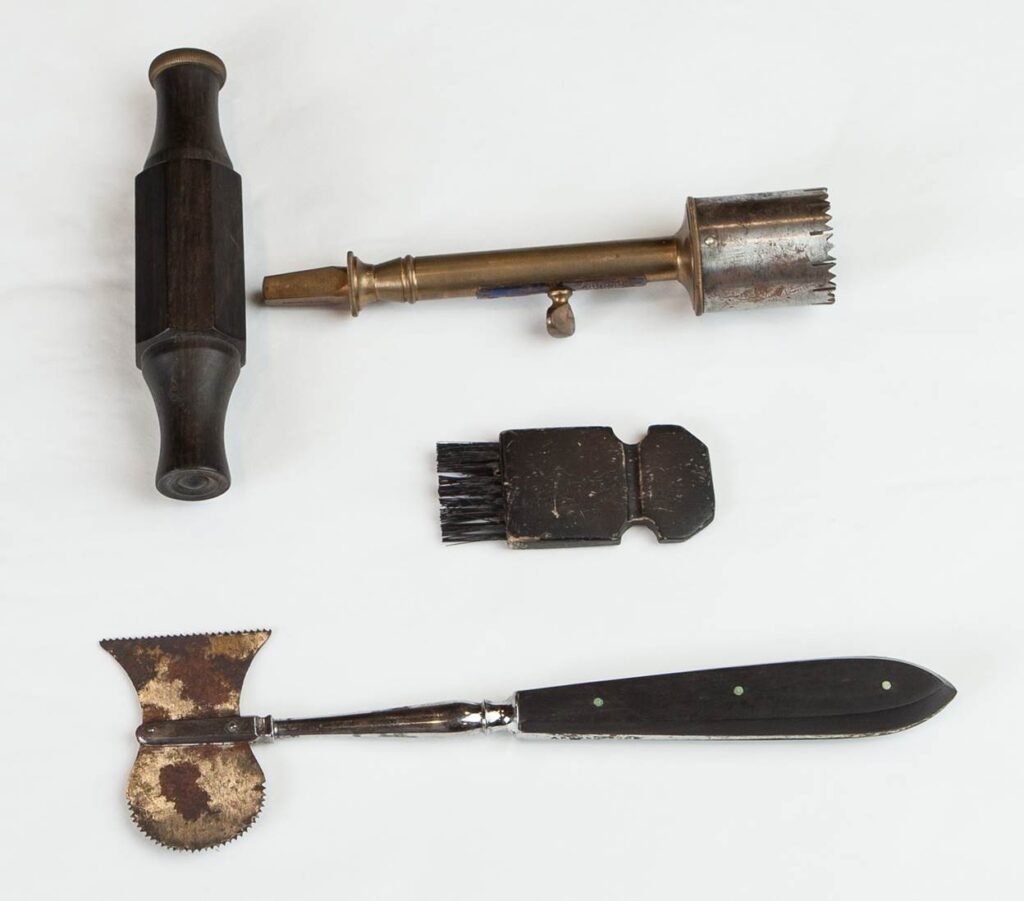We’ve been cataloging additions to our Historical Medical Artifact Collection recently. It’s always fun diving into the over 1,000 objects in the collection. This treasure is the Ortho-Fusor, a Bausch & Lomb product for “Modern Visual Training.”
The Ortho-Fusor, dated 1941, includes Polaroid 3D glasses, a reference manual, and a spiral-bound booklet with vectograph images and exercises. A vectograph is a type of stereoscopic image composed of two superimposed, polarized pictures that produce a 3D effect when viewed through polarizing spectacles. Think of it like going to a 3D movie, except you are viewing stills.
The Ortho-Fusor exercises, which involve refocusing your eyes on various points in the image, were designed for “re-educating and training visual skills” for the “modern need.” As noted in the reference manual, “the world of modern occupations has drawn many more thousands of us into factories, offices, libraries, schools, shops, and laboratories. Here for hours at a time we perform sustained and precise tasks with our eyes, frequently at very close distances…The precise teamwork of the eyes is a matter of coordination and habit.” The reference manual encourages 30 minutes of use a day, in five to ten minute intervals.
Ophthalmologists and optometrists, let us know what you think of these visual exercises and the Ortho-Fusor’s medical claims!
